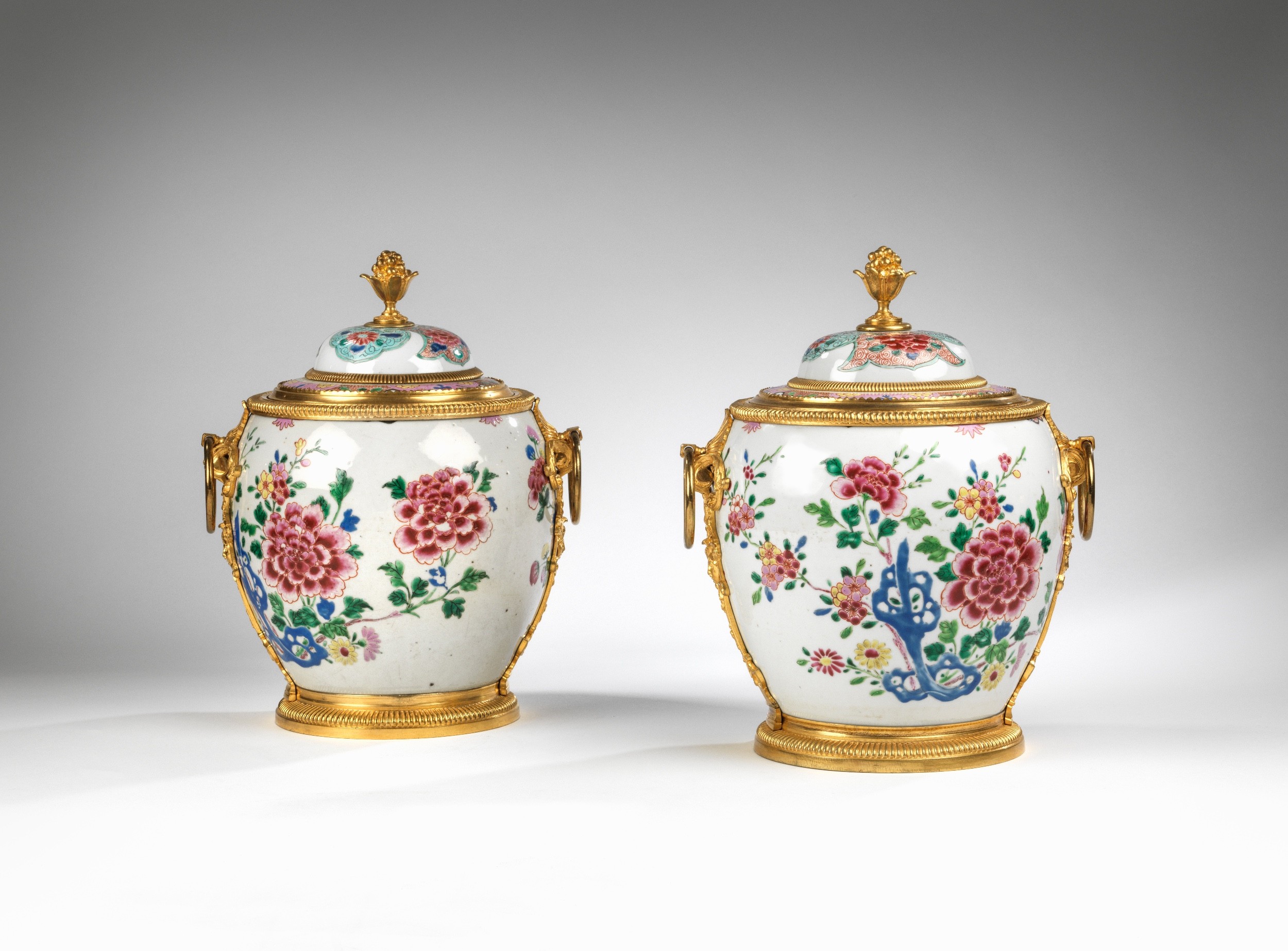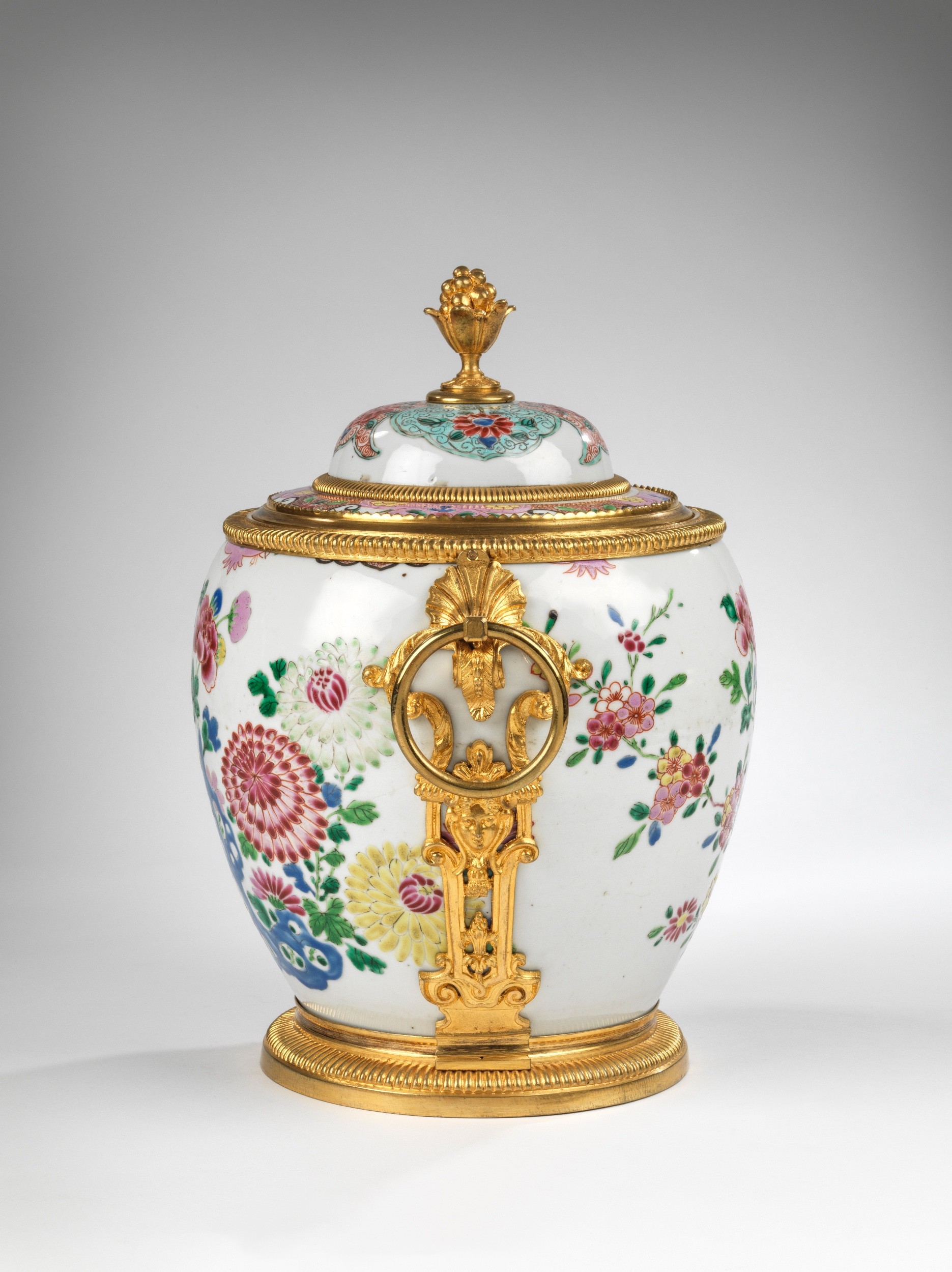

1780


These elegant covered bowls, with their restrained yet fashionable ormolu mounts, reflect the taste for both chinoiserie promoted by the Parisian marchand-merciers, such as Dominique Daguerre, as well as for luxurious objets montés throughout the greater part of the eighteenth century. Mounting Chinese porcelain objects with French ormolu mounts was perfected during the reign of Louis XV by the most well-known Parisian tradesmen including Lazare Duvaux and Thomas-Joachim Hébert. The marchands-merciers held a monopoly on the import of precious goods from the East such as lacquers and porcelains but were forbidden by the guild system from actually creating any finished product. They therefore presided over an extraordinary array of specialized artisans who produced their innovative goods, which were always at the forefront of fashion; ranging from the first pieces of furniture to be mounted with lacquer panels in the 1730s, to the exquisite porcelain-mounted pieces created in the 1770s and 1780s. This lot, however, is unusual as it incorporates famille rose porcelain, which was seldom used by the marchands-merciers, who were more known for mounting monochrome-decorated porcelain, such as celadon. Lazare Duvaux, for instance, records in his Livre-Journal numerous purchases of celadon porcelain by leading collectors. Among his richest clients was the marquis de Voyer d'Argenson who, as Courajod reports, 'achetait surtout chez Duvaux de la porcelaine Céladon garnie de pieds & de montures de bronze doré. Plus souvent, possesseur de pièces de choix, il chargeoit Duvaux de les monter. Celui-ci le mit en rapport avec le célèbre modeleur Duplessis...', see Livre-Journal de Lazare Duvaux, 2 vols. ed. L. Courajod, Paris, 1873, p. XXXIII.
| Dimensions | CM | Inches |
|---|---|---|
| Width: | 26 | 10 |
| Height: | 33 | 13 |